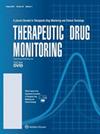摘要
背景:肿瘤坏死因子是免疫介导疾病中一种重要的促炎细胞因子。肿瘤坏死因子抑制剂(TNFi),如英夫利昔单抗和阿达木单抗,可有效治疗风湿病和消化系统疾病。然而,原发性无应答、继发性治疗失败或不良反应等挑战限制了它们的疗效。监测 TNFi 水平对于优化治疗和改善疗效至关重要。我们将酶联免疫吸附测定法(ELISA;Promonitor)与两种市售的英夫利昔单抗和阿达木单抗水平定量方法进行了比较:化学发光测定法(i-Track10)和荧光测定法(Afias-10):方法:分析了 166 名炎症性肠病患者的血清样本。使用 i-Track10、Afias-10 和 Promonitor 测定药物水平。统计分析采用了斯皮尔曼相关分析、Bland-Altman 分析、差异分析、Passing-Bablok 回归和用于一致性评估的 Cohen kappa:在Promonitor和Afias-10之间观察到英夫利西单抗(rs = 0.982)和阿达木单抗(rs = 0.972)与i-Track10(英夫利西单抗的rs = 0.935,阿达木单抗的rs = 0.947)之间有很强的相关性。然而,明显的差异表明与 ELISA 不能互换。Passing-Bablok 回归显示出系统性和比例性偏差。与 i-Track10 相比,Afias-10 与 Cohen kappa 对治疗范围的一致性更高(英夫利昔单抗的 κ = 0.962,阿达木单抗的 κ = 0.849):结论:Afias-10和i-Track10适用于TNFi监测,但不能与ELISA互换。患者监测应采用一致的检测方法,以确保准确性和可靠性。Background: Tumor necrosis factor is a crucial proinflammatory cytokine in immune-mediated diseases. Tumor necrosis factor inhibitors (TNFi), such as infliximab and adalimumab, effectively treat rheumatological and digestive disorders. However, challenges such as primary nonresponse, secondary treatment failure, or adverse reactions limit their efficacy. Monitoring TNFi levels is essential for optimizing treatment and improving outcomes. An enzyme-linked immunosorbent assay (ELISA; Promonitor) was compared with 2 commercially available methods for quantifying infliximab and adalimumab levels: the chemiluminescence assay (i-Track10) and fluorescence assay (Afias-10).
Methods: Serum samples from 166 patients with inflammatory bowel disease were analyzed. Drug levels were measured using i-Track10, Afias-10, and Promonitor. Spearman's correlation analysis, Bland-Altman analysis, analysis of differences, Passing-Bablok regression, and Cohen kappa for agreement assessment were used for statistical analysis.
Results: Strong correlations were observed between Promonitor and Afias-10 for infliximab (rs = 0.982) and adalimumab (rs = 0.972), and with i-Track10 (rs = 0.935 for infliximab, rs = 0.947 for adalimumab). However, significant differences indicated noninterchangeability with ELISA. Passing-Bablok regression showed systematic and proportional biases. Cohen kappa exhibited higher concordance with Afias-10 for therapeutic ranges (κ = 0.962 for infliximab, κ = 0.849 for adalimumab) compared with i-Track10.
Conclusions: Afias-10 and i-Track10 are suitable for TNFi monitoring but are not interchangeable with ELISA. Consistent assay methods should be used for patient monitoring to ensure accuracy and reliability.

 求助内容:
求助内容: 应助结果提醒方式:
应助结果提醒方式:


